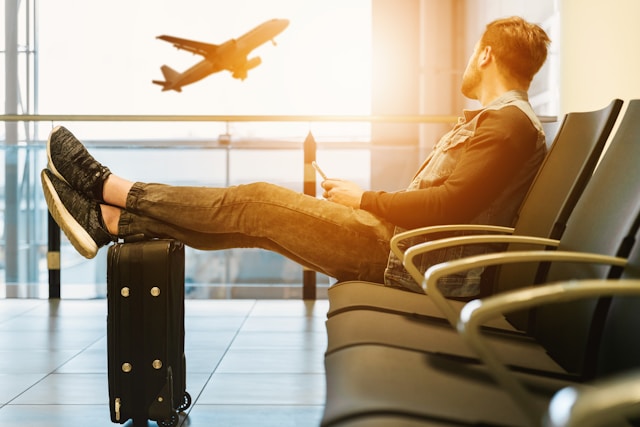Managing Fear of Flying with Modern Technology
The fear of flying, or aviophobia, is a common challenge faced by many travelers. Despite air travel being one of the safest modes of transportation, the thought of being thousands of feet above the ground can trigger intense anxiety in some individuals. This fear often stems from a sense of losing control, the unfamiliarity of the experience, or a general fear of the unknown. Fortunately, modern technology offers tools that can help alleviate this fear, making air travel a more manageable experience. One such tool is flight tracking services, such as Flightradars24.de, which can provide real-time insights into flight progress and status, helping to reduce anxiety and increase confidence in the safety of flying.
The Anxiety Behind Fear of Flying
Understanding the psychological roots of the fear of flying is key to addressing it effectively. This fear is often closely linked with anxiety disorders, where the mind focuses on worst-case scenarios, such as mechanical failures, turbulence, or even the fear of a crash. These thoughts can spiral out of control, leading to panic attacks or an overwhelming sense of dread before and during a flight.
Anxiety thrives in situations where there is a lack of control or uncertainty. When flying, passengers often feel disconnected from what is happening around them — they don’t know the current location of the plane, what the weather is like ahead, or how much longer the flight will last. This lack of information can amplify the fear of flying, as the unknown can seem far more dangerous than it actually is.
This is where modern technology steps in. By using a flight tracking service passengers can gain access to real-time data about their flight, including its exact location, speed, altitude, and even the current weather conditions along the route. Having this information readily available can help bridge the gap between perception and reality, reducing the fear that stems from uncertainty.
How Flight Tracking Technology Helps
Flight tracking services have become an essential tool not only for aviation enthusiasts but also for passengers who experience anxiety related to flying. With these services, you can monitor a flight’s progress from the moment it takes off to the moment it lands. This constant stream of information can be incredibly reassuring for anxious flyers.
For instance, knowing the exact position of the plane can help individuals feel more connected to the journey. Instead of imagining the worst when turbulence hits, passengers can look at the flight tracker and see that the plane is still on course, and that turbulence is a normal part of flying rather than a sign of danger. The ability to track the flight’s progress in real-time can help alleviate the feeling of helplessness that often accompanies fear of flying.
Moreover, flight tracking services often provide additional data such as weather reports and expected arrival times. For those who fear flying due to weather-related concerns, knowing the weather conditions at both the departure and arrival locations, as well as en route, can be calming. If you can see that the skies are clear or that the turbulence is minor and expected, it can greatly reduce the stress associated with these factors.

Complementary Strategies to Overcome Fear of Flying
While flight tracking is a powerful tool in combating aviophobia, it works best when combined with other strategies aimed at reducing anxiety. Here are a few methods that can complement the use of flight tracking services:
- Education on Aviation Safety: Understanding the rigorous safety protocols that airlines follow can be comforting. Learning about the statistics of air travel, the multiple backup systems in place, and the extensive training that pilots and crew undergo can help mitigate fears.
- Mindfulness and Breathing Exercises: Techniques such as deep breathing, meditation, and mindfulness can be effective in managing acute anxiety. These methods help focus the mind on the present moment, rather than on potential fears, making it easier to remain calm during the flight.
- Cognitive Behavioral Techniques (CBT): CBT is a psychological approach that helps individuals challenge and change negative thought patterns. By working with a therapist or using CBT techniques on your own, you can learn to replace fearful thoughts about flying with more rational, grounded perspectives.
- Gradual Exposure Therapy: Gradual exposure to the fear of flying, starting with short flights or even virtual flight experiences, can help desensitize the anxiety response over time. This method allows individuals to slowly build up their tolerance and confidence in a controlled and safe manner.
- Pre-Flight Preparation: Preparing for a flight by choosing a comfortable seat, packing distractions such as books or music, and arriving at the airport early to avoid rushing can help create a sense of control and reduce pre-flight anxiety.
The Future of Technology in Managing Flight Anxiety
As technology continues to evolve, the ways in which we can manage and reduce flight anxiety will likely expand. We can expect more advanced flight tracking apps, integration with virtual reality experiences that simulate flights in a safe environment, and more personalized tools that cater specifically to those with a fear of flying.
In conclusion, the fear of flying is a significant challenge for many, but modern technology offers effective solutions to help manage and overcome it. By using flight tracking services in combination with other anxiety-reducing techniques, individuals can take control of their fear and approach air travel with greater confidence and peace of mind. Air travel doesn’t have to be a source of stress — with the right tools and strategies, it can be a comfortable and even enjoyable experience.
